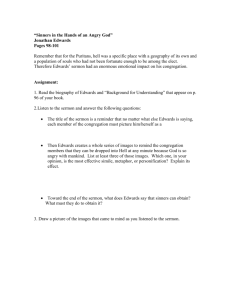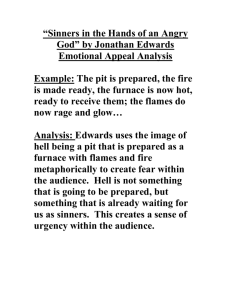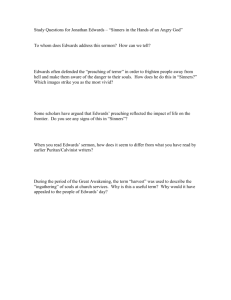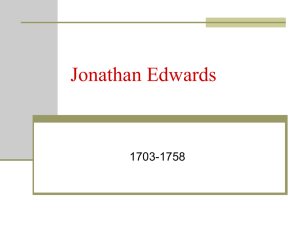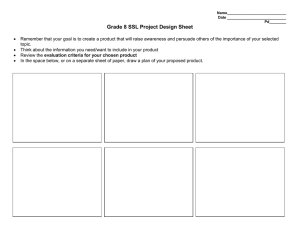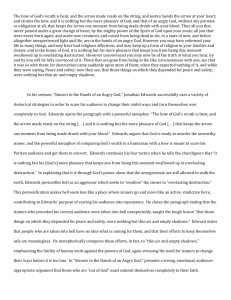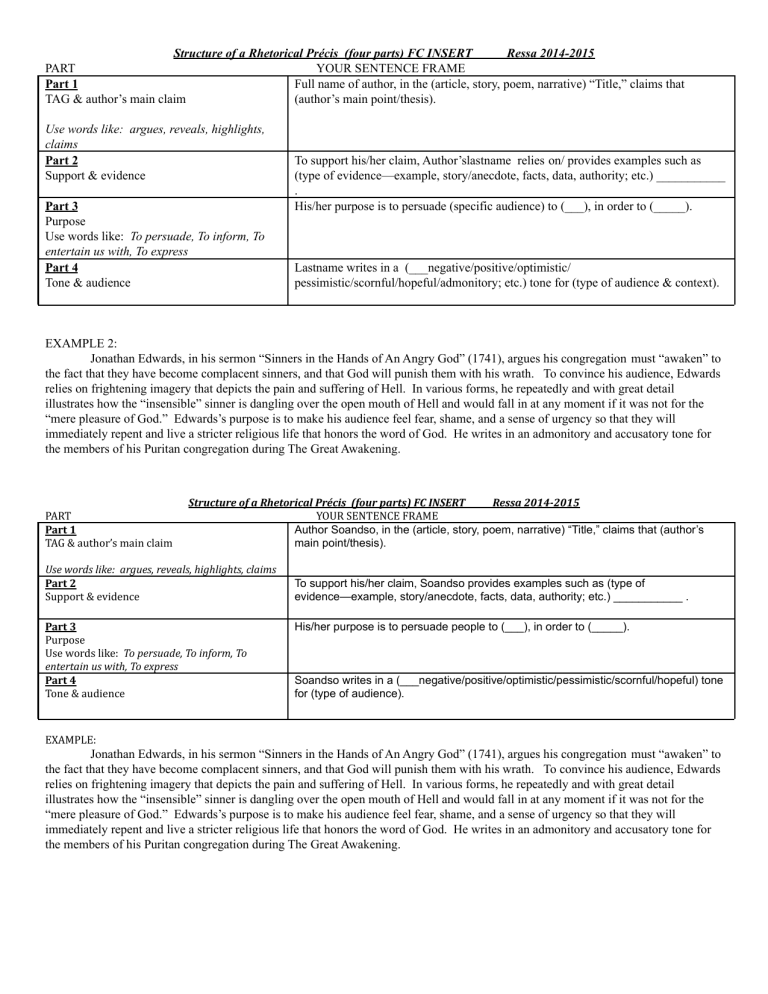
Structure of a Rhetorical Précis (four parts) FC INSERT Ressa 2014-2015 PART YOUR SENTENCE FRAME Part 1 Full name of author, in the (article, story, poem, narrative) “Title,” claims that TAG & author’s main claim (author’s main point/thesis). Use words like: argues, reveals, highlights, claims Part 2 Support & evidence Part 3 Purpose Use words like: To persuade, To inform, To entertain us with, To express Part 4 Tone & audience To support his/her claim, Author’slastname relies on/ provides examples such as (type of evidence—example, story/anecdote, facts, data, authority; etc.) ___________ . His/her purpose is to persuade (specific audience) to (___), in order to (_____). Lastname writes in a (___negative/positive/optimistic/ pessimistic/scornful/hopeful/admonitory; etc.) tone for (type of audience & context). EXAMPLE 2: Jonathan Edwards, in his sermon “Sinners in the Hands of An Angry God” (1741), argues his congregation must “awaken” to the fact that they have become complacent sinners, and that God will punish them with his wrath. To convince his audience, Edwards relies on frightening imagery that depicts the pain and suffering of Hell. In various forms, he repeatedly and with great detail illustrates how the “insensible” sinner is dangling over the open mouth of Hell and would fall in at any moment if it was not for the “mere pleasure of God.” Edwards’s purpose is to make his audience feel fear, shame, and a sense of urgency so that they will immediately repent and live a stricter religious life that honors the word of God. He writes in an admonitory and accusatory tone for the members of his Puritan congregation during The Great Awakening. PART Part 1 TAG & author’s main claim Structure of a Rhetorical Précis (four parts) FC INSERT Ressa 2014-2015 YOUR SENTENCE FRAME Author Soandso, in the (article, story, poem, narrative) “Title,” claims that (author’s main point/thesis). Use words like: argues, reveals, highlights, claims Part 2 Support & evidence Part 3 Purpose Use words like: To persuade, To inform, To entertain us with, To express Part 4 Tone & audience To support his/her claim, Soandso provides examples such as (type of evidence—example, story/anecdote, facts, data, authority; etc.) ___________ . His/her purpose is to persuade people to (___), in order to (_____). Soandso writes in a (___negative/positive/optimistic/pessimistic/scornful/hopeful) tone for (type of audience). EXAMPLE: Jonathan Edwards, in his sermon “Sinners in the Hands of An Angry God” (1741), argues his congregation must “awaken” to the fact that they have become complacent sinners, and that God will punish them with his wrath. To convince his audience, Edwards relies on frightening imagery that depicts the pain and suffering of Hell. In various forms, he repeatedly and with great detail illustrates how the “insensible” sinner is dangling over the open mouth of Hell and would fall in at any moment if it was not for the “mere pleasure of God.” Edwards’s purpose is to make his audience feel fear, shame, and a sense of urgency so that they will immediately repent and live a stricter religious life that honors the word of God. He writes in an admonitory and accusatory tone for the members of his Puritan congregation during The Great Awakening.
